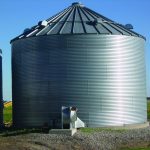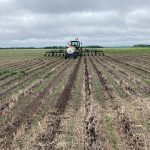
Pre-harvest aids
Know why you apply: tips for assessing the need for pre-harvest aids

How to condition canola with natural air drying and supplemental heat
Seven tips from Prairie Agricultural Machinery Institute

Fertility tips for corn
How to get the most out of your fertilizer dollars

A new way to water crops
Some Prairie farmers are opting for subsurface drip irrigation to boost crop production and increase water use efficiency

Flea beetles in canola: to spray or not to spray
Scouting your canola fields early — right after crop emergence — should tell you if foliar insecticide is needed or not

Blackleg is still a threat for canola
Resistant hybrids may not be enough to keep your fields safe from this canola disease

The challenge with large grain bins when storing canola
Fan limitations can make it harder to store canola safely

Should Manitoba Ag’s guidelines for target plant populations for spring cereal crops be adjusted?
Study concludes recommendations are good, even for newer, higher-yielding varieties

Find the best prices on petroleum, diesel and propane
A new tool from CXN360 offers easy access to the best fuel prices

Syngenta releases new grass and broadleaf cereal herbicide
Farmers can address herbicide resistance concerns and avoid rotational crop restrictions with Erebus Xtreme


